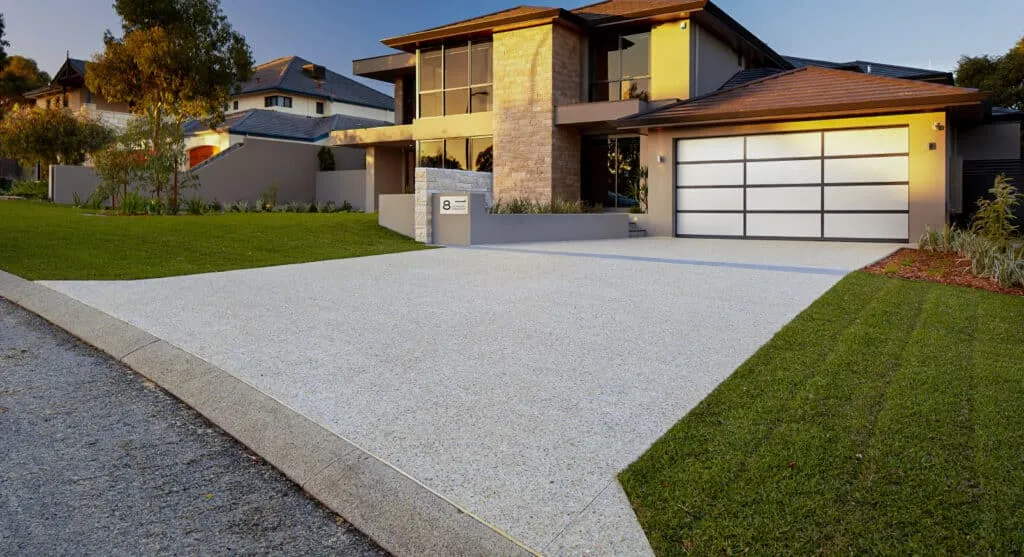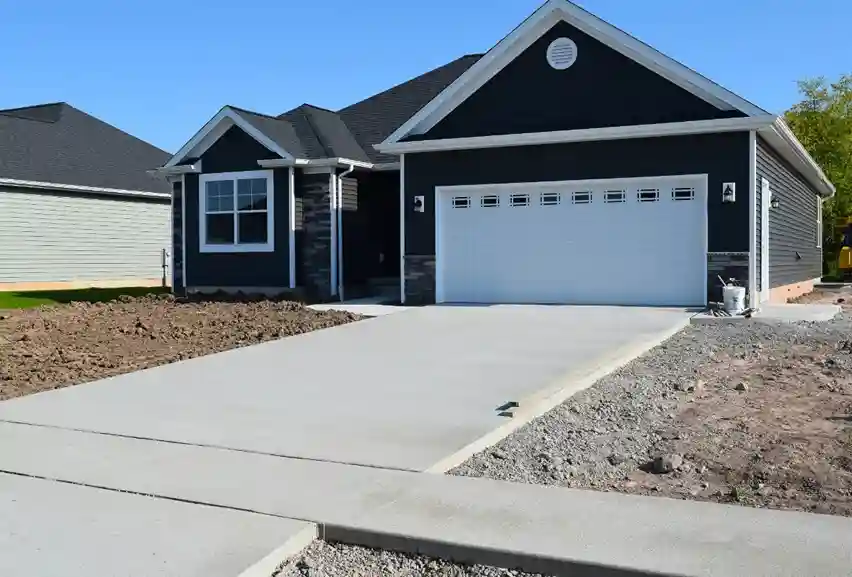Driveways are critical in providing safe, accessible access to homes and businesses. For individuals with disabilities, an accessible driveway isn’t just a convenience; it’s an essential feature that can significantly impact daily quality of life and mobility. This blog will guide you through the best practices and critical considerations for designing or retrofitting driveways to ensure they are accessible to everyone, whether for homeowners, visitors, or business patrons. By prioritizing these features, we can enhance the overall accessibility of our community. For more information and resources on creating accessible driveways in our community, you can visit our Savannah GA homepage. Together, we can make a difference by ensuring everyone can access safe and welcoming spaces.
Recent surveys indicate that around 20% of disabled people are living, highlighting ongoing challenges in accessibility, particularly in residential areas. Driveways often pose significant obstacles due to steep inclines, uneven surfaces, and inadequate curb cuts, affecting mobility for individuals using wheelchairs or other aids.
Right Driveway Width
One of the simplest but most impactful aspects of an accessible driveway is its width. A standard driveway width often ranges from 9 to 12 feet, but to ensure accessibility for those using mobility aids, a wider driveway (at least 12 feet) is recommended. This provides space for wheelchair users to maneuver and accommodates accessible vehicles or transport vans that may require more room. When designing or widening a driveway, consider additional space at the end to allow people to exit the vehicle comfortably and move towards the entryway. By ensuring adequate width, homeowners and businesses can provide an accessible, user-friendly experience for all. To enhance your outdoor space, consider also investing in patio installations or stamped concrete for visual appeal.

Prioritize a Smooth, Even Surface
Uneven or cracked surfaces can create significant barriers for wheelchair users or those with mobility challenges. Bumpy driveways increase the risk of falls and make it more difficult for wheelchairs and other mobility aids to navigate. For accessible driveways, choosing materials known for their smoothness is best, such as concrete or pavers with a flat finish. Beyond installation, regular maintenance is crucial to prevent cracks and bumps from developing. A yearly inspection and touch-up of small cracks can extend the driveway’s lifespan and ensure it remains a safe, accessible surface. Additionally, incorporating concrete paving solutions in nearby areas can enhance overall accessibility.
Slope and Gradient Requirements
ADA (Americans with Disabilities Act) guidelines recommend that accessible surfaces have a slope no greater than 1:20, or 5%, to prevent strain for wheelchair users. Consider adding landings or rest areas at intervals if the driveway is on a hill or has a steep incline. For larger slopes, textured surfaces can offer additional traction, especially in rainy or icy conditions. A gentle, consistent slope is crucial in providing safe accessibility and planning for these features at the design stage will yield a functional, user-friendly driveway. Furthermore, if you’re planning a concrete retaining wall, ensure it complements the overall slope design.
Use Non-Slip Surface Treatments
Weather can greatly impact driveway accessibility, especially for those with mobility impairments. Rain, ice, and snow can create slippery surfaces, posing serious risks. Applying slip-resistant coatings or textured treatments can provide extra traction and prevent falls. There are several non-slip options available, including:
Textured Concrete:
A fine texture or broom finish can offer better grip than smooth concrete.
Anti-Slip Sealants:
Adding a layer of anti-slip sealant to existing driveways can improve surface grip.Non-slip solutions are essential, ensuring that the driveway remains safe in all weather conditions, just like ensuring your pool deck has proper drainage to avoid slipping.

Accessible Parking and Entry Zones
For accessible driveways, it’s helpful to designate a specific parking and entry zone close to the main entrance. Marked, accessible spaces can make it easy for wheelchair users or those with other mobility aids to access the building without obstacles. Consider adding painted lines, a sign, or a physical barrier to clear this space. Providing a pathway free from obstructions, such as flower pots or garbage bins, helps ensure safe, convenient access for everyone. It’s also wise to ensure that steps leading up to the entryway are well-constructed and align with your driveway design.
Incorporate Clear Pathways
Clear, unobstructed pathways are essential for an accessible driveway. Design the driveway to lead directly to the front entry or a designated accessible entrance, and keep the path free of items that could obstruct a wheelchair or mobility aid. Lighting is also crucial for safety, especially for those with visual impairments. Installing motion-sensor or solar-powered lights along the driveway and entryway can make nighttime navigation more accessible and safer, reducing the risk of falls or accidents. The same attention to detail should apply to your concrete patios and other outdoor spaces to ensure seamless accessibility.
Include Ramps and Curbed Entries
Driveways often transition to other surfaces, such as steps or entryways, and it’s important to make these transitions accessible. Installing curb ramps where the driveway meets sidewalks or pathways allows smooth, step-free access. Adding a ramp can ensure seamless access if the driveway leads directly to an entrance. Consider incorporating handrails or edge protection for steeper ramps to enhance safety further.
Accessible Landscaping and Maintenance
Landscaping near the driveway can help maintain accessibility. Overgrown plants, low-hanging branches, or gravel from nearby garden beds can make navigating the driveway difficult. Choose low-growth plants along the sides of the driveway and keep landscaping features well-maintained to prevent obstacles. Routine maintenance is also crucial. Inspect the driveway periodically to clear debris, trim any overgrowth, and check for any emerging surface issues. Keeping the driveway and its surrounding area clean and clear will enhance accessibility and keep the area safe, just as you would ensure your pool deck is well-maintained for guest safety.

Add Visual and Tactile Indicators
For individuals with visual impairments, tactile and visual cues can make driveways much easier to navigate. Raised pavers or tactile warning strips can help people with limited vision detect pathway boundaries or changes in the driveway direction. These indicators provide a helpful guide, especially when paired with color-contrasting paint to enhance visibility. Such inclusivity should also be a consideration when designing other features like steps and pathways.
Accessible Entry Points
Once the driveway is accessible, it’s essential that it leads to an equally accessible entrance. Accessible doorways should be wide enough (usually at least 36 inches) to accommodate a wheelchair or walker and should have minimal thresholds. Automatic doors or push-button entry systems provide further ease of use. The transition from driveway to door should be seamless, with no unexpected steps or high thresholds, ensuring safe and easy access into the building.
Integrate Assistive Technology
Incorporating assistive technology can make the driveway more accessible and convenient. Features such as motion-sensor lights, smart locks, or automated gates can enhance ease of use for people with disabilities. Additionally, backup power sources can be beneficial, ensuring that gates, lighting, and other electronic features remain functional during power outages. Assistive technology not only enhances accessibility but also provides additional convenience and security, making the driveway experience smoother and more user-friendly.
Follow ADA Guidelines
It’s essential to consult local building codes and ADA guidelines to ensure your driveway meets accessibility standards. These guidelines offer specific measurements, slope requirements, and other criteria that help driveways and entryways remain accessible. Consulting with an accessibility specialist or architect can help ensure all the necessary standards are met, creating a compliant and accessible space.
